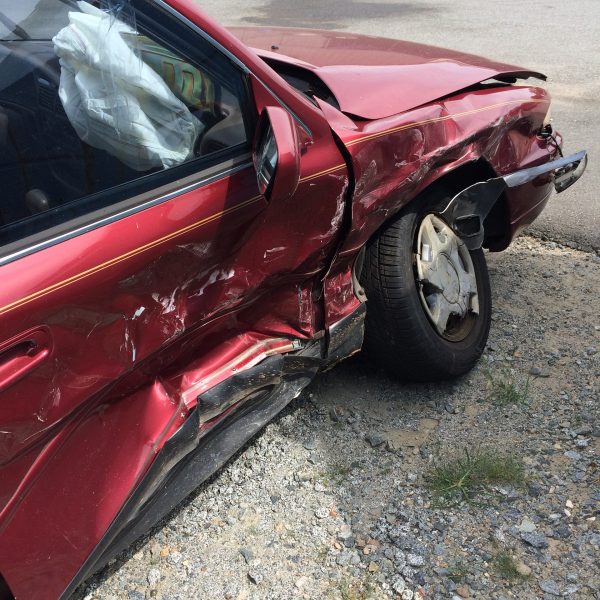What is crash for cash?
Crash for cash (sometimes called cash for crash) is where one or more criminals deliberately cause a crash in order to defraud the insurance company. The most common scenario is a car in front of you slamming on their brakes and you running into the back of them, Less common scenarios are driving in someone’s blind spot in the hope that you will change lanes and hit them, or speeding up to sideswipe someone changing lanes.
What is flash for cash?
Flash for cash also involves causing an accident, but this time the scammer will flash their lights at you at a junction to let you out then deliberately crash into you.

The scammer waits until you pull out from the T-junction then runs into the side of your car
Who is legally at fault in a crash for cash accident?
If there were witnesses or there is video evidence and you can prove that the other driver caused the accident deliberately, it is their fault. However, crash for cash accidents are staged to make it look like it is your fault. If you run into the back of someone it is because you were following too closely and couldn’t stop in time (this is outlined in the Highway Code and we’re all aware of the two-second rule for following distances). If you sideswipe a car while changing lanes, it’s your fault for not checking your blind spots.
What do scammers usually do in crash for cash accidents?
Scammers will often have their insurance details ready and written out. They may feign serious injury (usually whiplash) even if the impact was slight. They will exaggerate the costs incurred by them to your insurance company, such as car hire, vehicle recovery and therapy for injuries.
How much does crash for cash cost the UK public?
Insurance companies are detecting 2400 fraudulent insurance claims every week worth £25 million, but fraud still adds around £50 to every policy. This compounds the already record highs we are paying for car insurance due to increased repair bills and higher theft costs.
How do you avoid being a victim?
- Avoid following cars that have defective brake lights; fraudsters often disable their brake lights to make it easier to cause an accident.
- Be aware of drivers that seem adamant it’s your fault, even though it seems like it isn’t; let your insurance company know.
- Be aware of drivers that provide you ‘official-looking’ documents that have multiple spelling errors.
- Don’t trust a vehicle that flashes their lights at you. Wait until you’re sure it’s safe to pull out.
- Don’t trust a vehicle’s indicator. Wait until they are turning before making your move.
- Watch for drivers constantly checking their rear-view mirror.
- Watch for erratic drivers; a fraudster may try the manoeuvre and fail the first time, so don’t let yourself be the second option.
- Get an in-car camera. Fraudsters have been known to stop suddenly then reverse into the vehicle behind that also managed to stop in time.
What should you do if you crash into a vehicle and you suspect it’s a fraudulent accident?
- Don’t admit liability at the scene. They might be recording you.
- Don’t challenge the driver with your suspicions. Take their details and get them to verify it.
- Make notes about what is said. Record it if you can (smartphones usually have an audio record function).
- Take photos of the scene if it’s safe.
- Insist on calling the police.
- Beware of false witnesses that might have been planted by the criminal gang.
- Ensure that your in-car camera isn’t stolen while you are out of your car dealing with the accident; it could be your only record of what actually happened.
- Report the incident to your insurer along with any suspicions, and report it to the Insurance Fraud Bureau.
